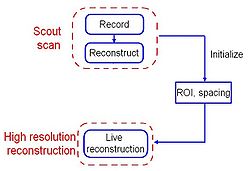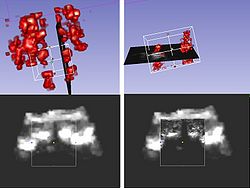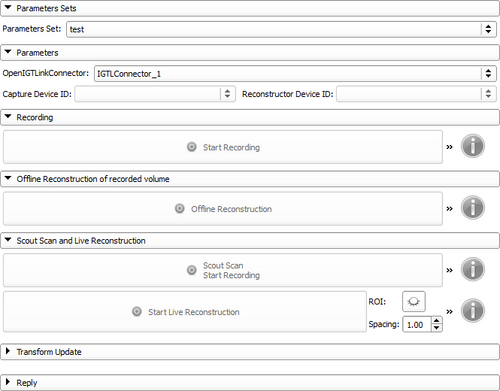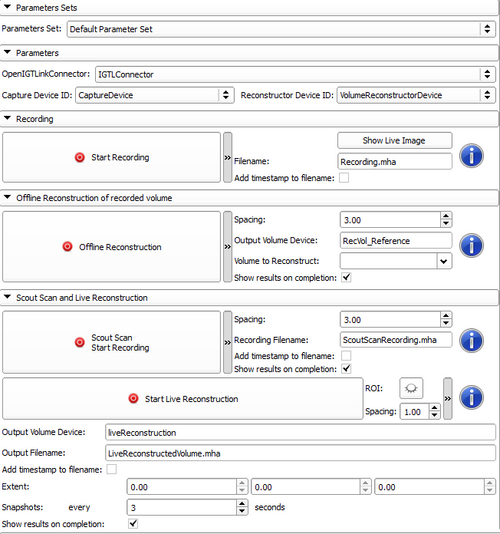Difference between revisions of "Documentation/Nightly/Modules/PlusRemote"
Ameliemeyer (talk | contribs) |
Ameliemeyer (talk | contribs) |
||
| Line 46: | Line 46: | ||
<!-- ---------------------------- --> | <!-- ---------------------------- --> | ||
{{documentation/{{documentation/version}}/module-section|Panels and their use}} | {{documentation/{{documentation/version}}/module-section|Panels and their use}} | ||
| − | [[File: | + | [[File:PlusRemote_panel.png|500px|thumb|right|Plus Remote panel]] |
| + | [[File:PlusRemote_AdvancedOptions.png|500px|thumb|right|Plus Remote panel with advanced parameters]] | ||
*Recording: Start and stop recording | *Recording: Start and stop recording | ||
Revision as of 16:05, 25 August 2014
Home < Documentation < Nightly < Modules < PlusRemote
|
For the latest Slicer documentation, visit the read-the-docs. |
Introduction and Acknowledgements
|
| |||
|
Module Description
Convenience module for sending commands through OpenIGTLink Remote to PLUS. Requires OpenIGTLink Remote module available in the SlicerIGT extension. See https://www.assembla.com/spaces/plus/wiki/PlusServer_commands for more information about PLUS server commands.
The module provides the following features:
- Recording of 2D tracked ultrasound frames
- Volume reconstruction of recorded frames
- Live ultrasound volume reconstruction using scout scanning
- Sending Transform Update command to PLUS server
Use Cases
Some ultrasound-guided interventions require a general view of an entire area followed by more detailed images of a specific region. One example is spinal injection procedures. The problem is that, for elderly patients, the epidural area is not directly visible in ultrasound images because the intervertebral space is often compressed or deformed. In this case, physicians use four vertebrae landmarks to estimate the position of the target. Visualization can be improved using reconstructed 3D ultrasound volumes, but often there is not enough time for high resolution reconstruction of a large area during interventions.
The live ultrasound volume reconstruction workflow using scout scanning is then adapted for these procedures. The two-step method allows user to perform quick low resolution scout scan followed by high resolution volume reconstruction of a selected region of interest, in real-time. Low resolution scout scanning offers visualization of the global area and selection of the region of interest, and then high resolution reconstruction provides a good image quality of the targeted region.
Tutorials
The SlicerIGT website provides a tutorial for ultrasound volume reconstruction in Slicer using Plus Remote (U35).
Panels and their use
- Recording: Start and stop recording
- Transform Update: Update transform from what is set in the PLUS config file; Requires name of transform node to match an existing transform in the PLUS config file
- Reply: Feedback message from PLUS server
Similar Modules
N/A
References
Information for Developers
| Section under construction. |





